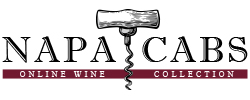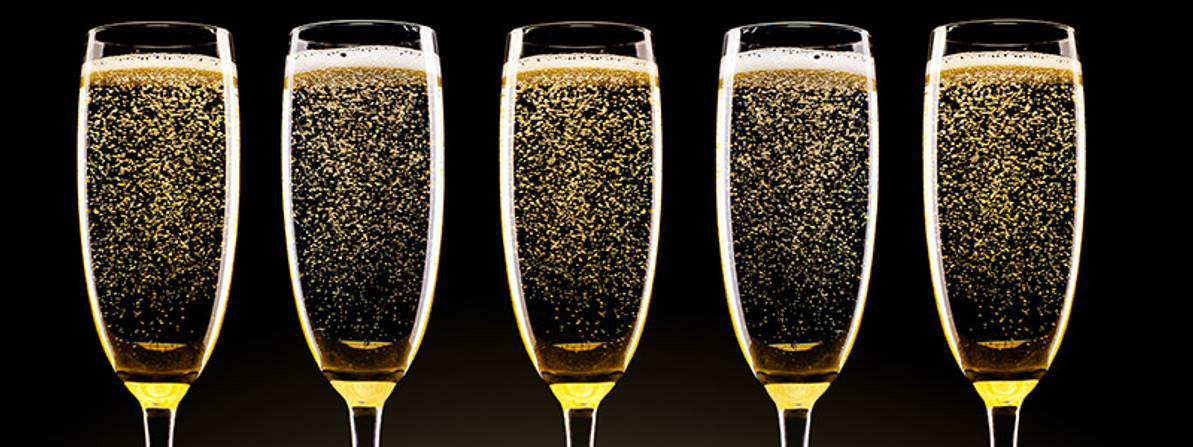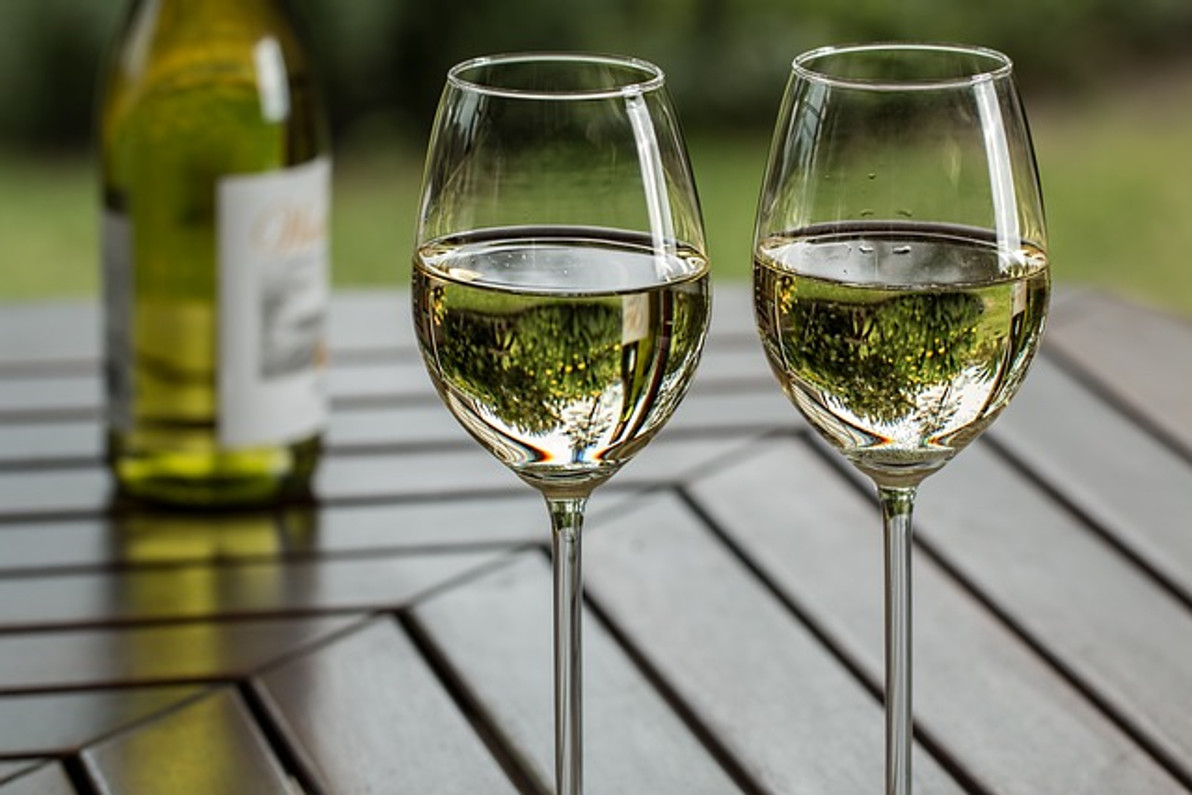The History of Champagne
Out of all wines, none is so associated with luxury, celebration, and partying as champagne. “Bring out the bubbly” or “Pop the cork” usually refer to an invitation to drink champagne. Despite its popularity, There are some misconceptions about champagne. This article will give facts and interesting tidbits about this popular fizzy drink, and will also talk about the most popular champagne brands in the world, as well as types of food that go very well with this drink.
What is Champagne?
Champagne is an alcoholic drink with the defining characteristic of its fizz or bubble. Once associated with extreme luxury and royalty, champagne has always been regarded as an expensive drink, reserved for special occasions. However, these days, this drink is sold in a variety of prices. The quality of the drink remains superior as its production is derived from centuries of stringent quality control and revolutionary technological innovations.
What Classifies as Champagne?
Some people think that any sparkling white wine is synonymous with champagne. Many people use the term loosely to mean any type of generic sparkling wine. Sparkling wine is the general term used for carbonated wine.
Strictly speaking, what can be called champagne is wine that is produced only from grapes grown from the Champagne region of France. These grapes, when harvested and fermented, must follow strict rules and practices that are unique to the region. According to European Union law, then and only then will the wine be considered champagne. It is, therefore, illegal to label a wine product champagne unless it follows these two criteria: (1) it comes from the Champagne region; and (2) production should be subject to strict rules.
The Comite Interprofessionnel du vin de Champagne has a list of champagne growers and houses. So far, there are only 320 houses of Champagne and 16,000 winegrowers in the region. It is also important to note that only three varietals of grapes are accepted for champagne production. These grapes are chardonnay, pinot noir, and pinot meunier. It is not just the grape varieties that make champagne what it is. The climatic and geographical conditions of this region in northeastern France are also important. The region has a dual climate, limestone subsoil, and an undulating to moderately steep terrain. The vineyard boundaries of the Champagne region have been defined by the appellation system of France. The quality of this drink is strictly controlled by regional and national associations in France.

Special Characteristics of the Champagne Region
As previously mentioned, the strategic location of France’s Champagne region, as well as its rugged climate and distinctive soil, are all contributing factors to the quality of the wine it produces. Let’s take a closer look at these factors:
- Dual Climate: The dual climate of the region is a contributing factor to the quality of its grapes. The vines are planted in a northerly location, which means a cold climate. It has low levels of sunshine, which results in grapes that are known for their freshness and crispness. The dual climate means that the region has nearly ideal rainfall conditions. This is ideal for quality grape production.
- Limestone Subsoil: Limestone subsoil keeps the vines naturally watered all year round. This type of soil also provides the particularly subtle mineral flavor found in some champagne wines. The chalky substance in limestone makes it highly porous and capable of storing water. This natural reservoir gives the vines a steady water supply even during the driest of summers.
- Sloped Terrain: The terrain in Champagne is undulating to moderately steep. These sloping vineyards are ideal because they provide excellent drainage and sunlight exposure.
Types of Champagne Grapes
Generally, there are only three types of champagne grapes:
- Chardonnay: Chardonnay is an ancient grape type and it thrives in the cold climate of Champagne. Chardonnay is easy to grow and has an exceptional yield. Chardonnay grapes have a unique aroma – it produces an aroma of exotic fruits, peaches, raspberries, tea, vanilla, and roses. This grape variety yields delicately fragrant wines.
- Pinot Noir: Pinot noir is a delicate grape variety. It is actually a red grape, so the transformation of red into white wine is carefully scheduled, a process that usually happened during the second fermentation. Pinot noir has the distinctive flavor of red berries with hints of herbs.
- Pinot Meunier: This type of grape is characterized by its spicy aroma and robust flavor. It is never used alone in the champagne making process. It is almost always used in combination with either chardonnay or pinot noir. It produces a supple, fruity wine that is used to enrich the flavor and aroma of the champagne.
Early History of Champagne
One of the most well-known legends of how champagne came to be is the story of Dom Pérignon, a monk who made white wine in the Champagne region during the 1600s. During a particularly cold time in the region, he noticed that the yeast had converted sugar to alcohol earlier than expected. Because of this early fermentation, he decided to bottle the wine before it was due. What had happened was because of the cold; the yeast had simply gone to sleep without finishing its job of fermenting the sugar to alcohol. When spring came and the days became warmer, the yeast woke up and continued its fermentation process. The carbon dioxide that was created had no chance to escape because the liquid had been bottled, so the gas was absorbed by the wine, which resulted in its carbonation. As you would imagine, Dom Pérignon was surprised when he was met with popping corks when he checked on his wines. This story is a myth, of course.
Here are the facts: The first-ever recorded mention of effervescence in wine comes from an Egyptian papyrus which dates as far back as 522 AD. Medieval European literature also refers to secondary fermentation, which gives a wine its sparkling effect.
We now recognize champagne as a refined bubbly, fizzy drink. However, the first sparkling wines were developed from 1670 to 1690 and makers faced a less refined process. The common problem of Champagne producers during these early days was exploding bottles. In the early 18th century, producers developed cork stoppers fastened with wire and improved storing and aging conditions in cellars. When stronger bottles were developed and when the Champagne method was discovered, drinkers began enjoying the characteristics sparkle, which has become the signature of champagne. The Champagne method is often called the traditional method. Documentary evidence suggests that the Champagne region is the only geographical location where the sparkling wine that bears its name has been made on a regular basis for hundreds of years.
How is Champagne Produced?
Champagne grapes are picked between the months of August and October. They are usually handpicked to ensure that only the best grapes are used for the champagne. They are then carefully pressed using a gentle and gradual increase in pressure in strictly-regulated pressing centers. It should be characterized by low juice extraction.
The pressed juice is put into stainless steel tanks and will undergo the first fermentation process. The result of the first fermentation is acidic-tasting wine. A few producers still choose to ferment their wines in oak, but many producers prefer vats that are controlled thermostatically.
After the primary fermentation process, the next process is blending champagne wines. This is an important part of the winemaking method, where producers marry the three different grape varieties to bring out distinctive flavors. Sometimes, champagne blending focuses on a single variety. For instance, wines made from pure Chardonnay grapes are called Blanc de Blancs.
 The carbonation in champagne should only be produced through
one method, as specifically mandated by regulations of the Comite Interprofessionnel du vin de Champagne. This method is
called méthode Champenoise or the Champagne method.
The carbonation in champagne should only be produced through
one method, as specifically mandated by regulations of the Comite Interprofessionnel du vin de Champagne. This method is
called méthode Champenoise or the Champagne method.
The Champagne method allows a second fermentation to occur within the bottle right after its first fermentation and bottling process. When the bottles are filled, they are hermetically sealed using a polyethylene stopper and reinforced with a metal cap. The bottles are then placed in a cellar. They need to be stacked horizontally. The second fermentation lasts for about 6 to 8 weeks. Bottle fermentation is when the champagne captures its sparkle and it completes the fermentation process.
The champagne will be aged in a cool cellar for a few more years. According to the French appellation, in order to completely develop the flavor of champagne, it should be aged for a minimum of 1.5 years. The best and most expensive Champagne wines are aged for more than five years.
After the aging process, the bottle is manipulated in a process called riddling. This is when the lees or deposits of dead yeast are made to settle in the neck of the bottle and removed. The bottle is rotated in this process in small increments. The pressure in the bottle forces out the lees. The bottles are placed in racks with bottlenecks facing downwards.
The final step in the production of champagne is the disgorgement, which finally eliminates the deposit that has collected on the neck of the bottle. Disgorgement is now done mechanically, but there are some producers that still do it by hand.
Popular Producers and Brands of Champagne
- Dom Pérignon: This is the most well-known and most prestigious champagne brand in the world. Dom Pérignon is almost always the brand that big celebrities drink. This brand was named for a 17th-century Benedictine monk. He largely contributed to the development of champagne during his lifetime. Owned by Moët & Chandon, this brand is aged for seven years, ensuring top-notch taste and aroma.
- Moët & Chandon: It is the best-selling champagne brand in the world. Its brand ambassadors are glamorous Hollywood celebrities and world-class athletes. Founded in 1743 by Claude Moët, it also sponsors the world’s most luxurious and high-profile events.
- Veuve Clicquot: With its well-known yellow label, this champagne brand is probably the most recognizable champagne bottle in the world. This brand is attributed to the establishment of the drink as favored by European aristocracy. The name of the brand translates to “Widow Clicquot” in English. She was married to the company’s heir, Francois, and was widowed at age 27. She is attributed to be the first woman to ever run a champagne house. Innovative and headstrong, she saved the company and made the brand what it is today.
- Bollinger: This is made from Pinot Noir grapes, which gives it a fruity and smoky flavor. Bollinger is also famous for sticking to oak during the aging process. Founded in 1829, they still use barrels that are 110 years old, which gives it a bruised, spicy flavor. The pop culture appeal of Bollinger stems from its presence in James Bond films and books.
- Laurent-Perrier: This iconic champagne brand has been around since 1812. It is the symbol of understated elegance and sophistication. It was one of the first companies to have a system of temperature-controlled vats, as early as 1950. It now has a low-calorie champagne that the fashion crowd favors.
Popular Food Pairings with Champagne
Champagne is the ultimate party drink, and what’s a great party without great food?
Since champagne has the perfect balance of dryness, fruitiness, spiciness, and acidity, it pairs well with foods that have rich buttery sauces. It is perfect with a butter cream sauce. It is very good with pasta and risotto in butter-based or mushroom sauce. Avoid pairing it with tomato-based dishes because the taste clashes with the champagne flavor.
It is also perfectly paired with brie-style cheeses, goat cheese and mascarpone. It goes well with delicate meats such as lobster, shrimp, shellfish, calamari, oyster, grilled chicken breast, and smoked salmon. It works best with fruit-based desserts such as crepes or tarts. Egg dishes also pair very well with champagne. Try it with deviled eggs or poached eggs. Another classic pairing is champagne and mushrooms. Any mushroom dish is elevated when paired with a bubbly drink. Surprisingly, buttered popcorn is really tasty when paired with champagne.
Recent Posts
-
Essential Wine Guide: Top Tips for Selecting, Tasting, and Enjoying Your Bottle
Picking the right wine can be a sensory quest as rich as the flavors in your glass. Navigate the lan …Apr 18th 2024 -
The Ultimate Wine FAQ Sheet
Do you have some burning wine questions that need answering? We're here to help!Let's get straight t …Mar 19th 2024 -
A White Wine Food Pairing Guide To Make Every Meal Exceptional
A meal is only complete once you have the ultimate wine pairing to go with it. Red wine is excellent …Feb 6th 2024




